definition kelly hose in stock

A large-diameter (3- to 5-in inside diameter), high-pressure flexible line used to connect the standpipe to the swivel. This flexible piping arrangement permits the kelly (and, in turn, the drillstring and bit) to be raised or lowered while drilling fluid is pumped through the drillstring. The simultaneous lowering of the drillstring while pumping fluid is critical to the drilling operation.
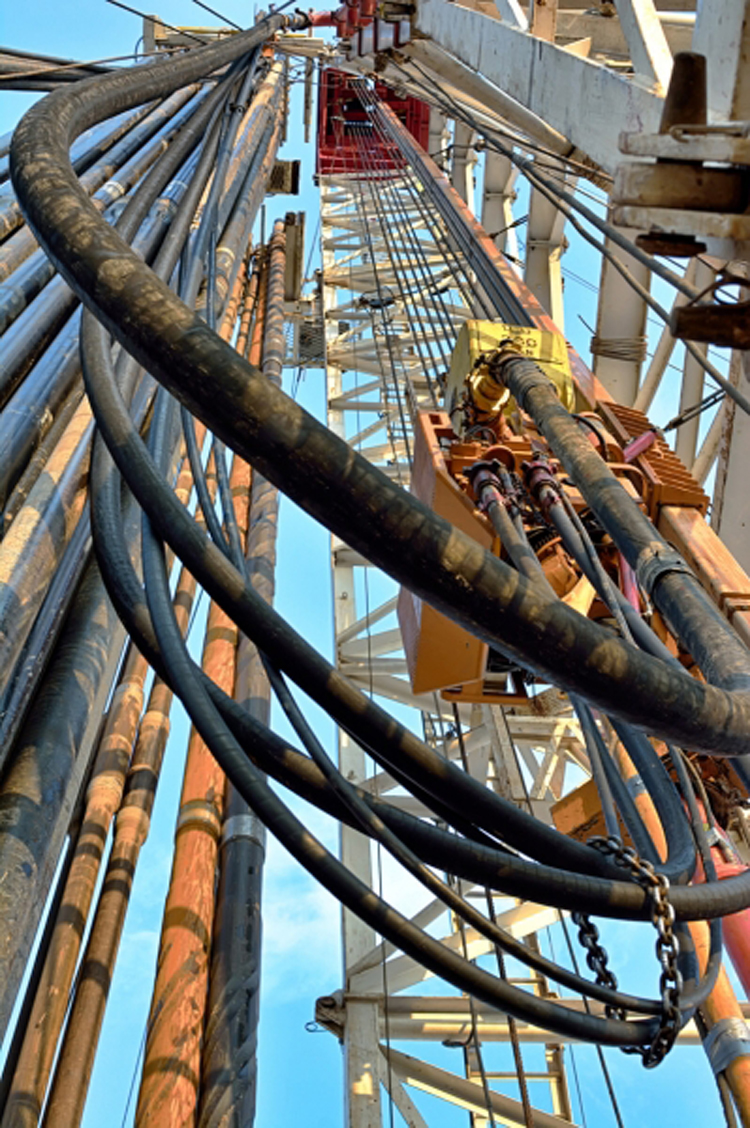
A kelly hose is a piece of mining equipment. Specifically, it refers to a piece of equipment used in the mining of fluid or semi-fluid resources, such as oil and natural gas. The main purpose of a kelly hose is to allow the drill string to be raised and lowered at the same time that drill fluid is being pumped through it. This is important, as drill fluid is critical to the mining process.
In most cases, a kelly hose is classified as a large-diameter hose. This means that the inside diameter is usually between 3 and 5 inches (about 7.6 cm and 12.7 cm). This wide diameter allows for a significant rate of flow and reduces the likelihood of a blockage occurring in the hose.
The kelly hose must also be able to withstand large amounts of pressure. This applies primarily to the pressure of the fluid flowing through the hose. For this reason, it is often made of highly durable material and is generally reinforced with steel.
In a derrick or drilling rig, the kelly hose connects the standpipe, which is the rigid metal shaft that delivers the mining fluid, to the swivel, which is the piece that supports the weight of and controls the rotation of the drill string. Its purpose is to provide a flexible drilling fluid conduit, as a rigid conduit would be unable to move with the swivel and would therefore disallow movement of the drill string and, subsequently, the bit.
The drilling fluid, sometimes called drilling mud, carried by a kelly hose is critical to operations in several ways. It keeps the bit cool, which helps reduce friction and failure. It also cleans the bit and carries away drill cuttings so they cannot damage the drill assembly. Some varieties are used for additional purposes, such as preventing corrosion and providing hydrostatic pressure. Drilling fluid is not necessarily fluid, but may, in fact, be a solid, liquid, gas or other combined form.
The kelly hose is so named because of its connection with the kelly, the actual mechanical piece that ejects the drilling fluid over the drill string. It may alternatively be called a mud hose or a rotary hose. Failure can occur, despite the rugged construction of the hose. Such failure can lead to damage to the rig or a failure to operate. Failed kelly hoses must be repaired or replaced before mining operations can safely and effectively resume.

The IADC Lexicon is © IADC. However, the documents from which the definitions were drawn may be copyrighted by the original sources, and may not be used without express permission of the copyright holders. IADC expressly recognizes the copyrights of contributors to this Lexicon, including API, OGP, ISO, NORSOK and DNV.
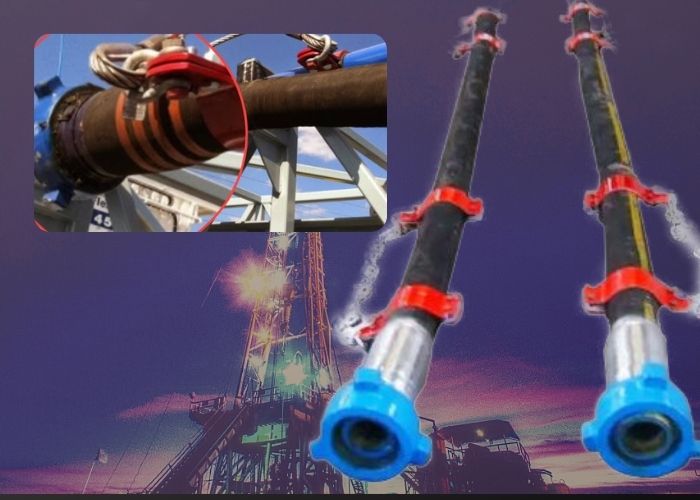
This is the brief explanation of a Kelly rotating system on the rig. Kelly rig is on an old style rigs and nowadays it is mostly used on land operations. For offshore operation, a top drive system is used instead.
The upper end of the drill pipe is screwed onto the saver sub. The saver sub is used to protect and minimize wearr and tear on the threads at the bottom of the Kelly. The Kelly is about 40 ft in length with a square or hexagonal shape and it is hollow throughout in order to transport the drilling mud. Kelly moves freely through a Kelly bushing even though the drill stem is rotated.
A Kelly cock valve is located at the top of a Kelly and it is a safety valve which can be closed to stop back pressure from coming back to damage other surface equipment.
A swivel attached to the hook does not rotate, but at the bottom part it supports the Kelly which is being rotated while drilling. Drilling mud is pumped from a mud pump to a stand pipe manifold, Kelly hose and then to a gooseneck connection at a swivel.
A rotary table rotates a Kelly bushing and it simultaneously rotates a Kelly and a drill string and a drill bit. A rotary table has two main functions. The first one is to provide rotation to a drill stem and a bit and the second function is to hold slip in order to support the weight of a drill stem when it is not connected to a Kelly.
A master bushing severs its function as a rotary motion transmission from a rotary table to a Kelly. Additionally, it is a link between a slip and a rotary table.
A Kelly bushing (some people call “rotary Kelly bushing”) engages a master bushing via four pins and rollers inside a Kelly bushing to allow a Kelly to move up or down freely while it is rotated or in a static mode.
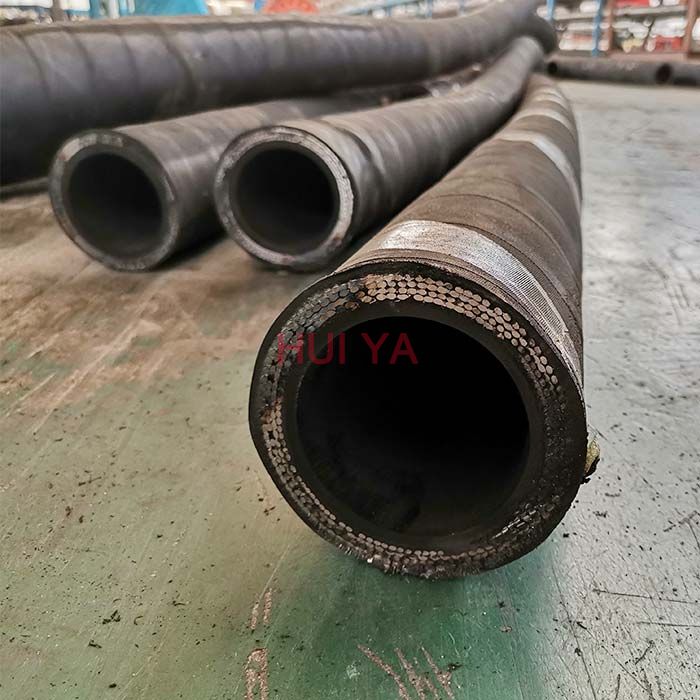
A device fitted to the rotary table through which the kelly passes. It is the means by which the torque of the rotary table is transmitted to the kelly and to the drill stem. Also called the drive bushing.†
A hole in the rig floor 30 to 35 feet deep, lined with casing that projects above the floor. The kelly is placed in the rathole when hoisting operations are in progress.†
The hose on a rotary drilling rig that conducts the drilling fluid from the mud pump and standpipe to the swivel and kelly; also called the mud hose or the kelly hose.†
A vertical pipe rising along the side of the derrick or mast. It joins the discharge line leading from the mud pump to the rotary hose and through which mud is pumped going into the hole.†
A rotary tool that is hung from the rotary hook and traveling block to suspend and permit free rotation of the drill stem. It also provides a connection for the rotary hose and a passageway for the flow of drilling fluid into the drill stem.†
The top drive rotates the drill string end bit without the use of a kelly and rotary table. The top drive is operated from a control console on the rig floor.†

Flexible drilling rubber hoses play an important role in petroleum extraction. They should suffer high operating pressure, extreme operating temperature, abrasion and other inferior elements. Our special compounded synthetic rubber has been proven an effective and economical way to reject these problems. All our oilfield drill hoses are manufactured as API 7K or other related specifications.
Steel cable reinforcement loads most working pressure up to 15,000psi. The wires are usually zinc-plating or copper platting to improve steel wire resistant against rust and corrosion. Due to the thick reinforcement, the hoses should be handled or stored in correct way to avoid kicking or crushing. They will substantially decrease their rated operating pressure.
Rotary hose, Kelly hose, cement hose, mud hose, jumper hose and vibrator hose and choke & kill hoses are the most popular oilfield rubber hoses. They convey high-pressure drilling fluid from one place to another. Many end fittings are provided to satisfy different applications. Most end fittings are made according to API standards. Special order is also available.
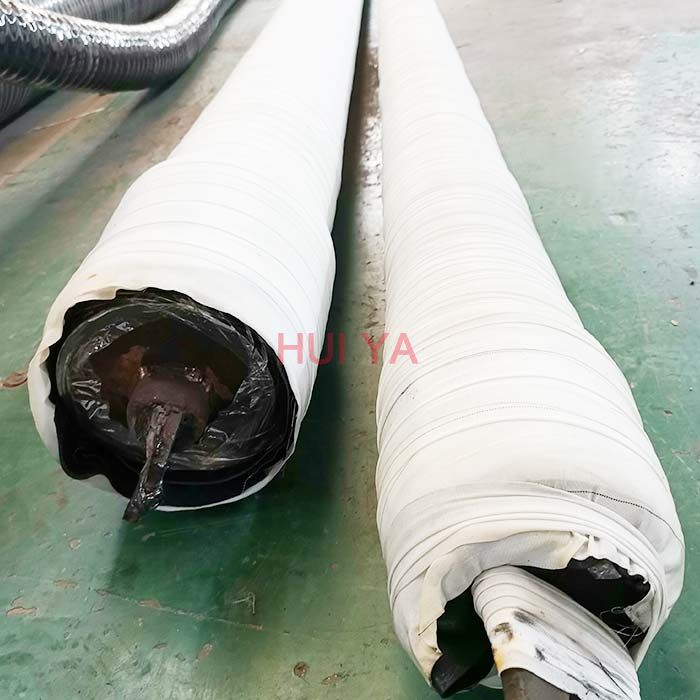
The rotary system includes all of the equipment used to achieve bit rotation. Originally, the main driver in the system of all rigs was the rotary table. The main parts of the rotary system with a rotary table are the swivel, kelly, and drillstring.
The rotary swivel (Fig. 1)serves two important functions in the drilling process. It is a connecting point between the circulating system and the rotary system. It also provides a fl uid seal that must absorb rotational wear while holding pressure. The upper section of the swivel has a bail for connection to the elevator hook, and the gooseneck of the swivel provides a downward-pointing connection for the rotary hose.
The kelly is the fi rst section of pipe below the swivel. The outside cross section of the kelly is square or (mostcommonly) hexagonal to permit it to be gripped easily for turning. Torque is transmitted to the kelly through kelly bushings, which fi t inside the master bushing of the rotary table. The kelly thread is right-handed on the lower end and left-handed on the upper end to permit normal right-hand rotation of the drillstring.
During drilling operations, in every connection, a new pipe is added below the kelly. To avoid premature wear in the kelly’s threads, a kelly saver sub is used between the kelly and the fi rst joint of drillpipe. Kelly cock valves are located on either end of the kelly.
Modern rigs use a topdrive to replace the kelly, kelly bushings, and rotary table. Drillstring rotation is achieved through hydraulic or electric motors. One type of topdrive is shown in Fig. 2

New rubber compounds, higher working pressures and temperatures, stricter environmental and safety regulations – all make hose selection a challenge. At Gates, we make it easy. That’s because our line of high pressure oilfield hoses are made with the demands of today’s drilling methods in mind. From rotary-vibrator drilling hoses to choke and kill hoses, find oilfield hoses built tough to handle the pressure.
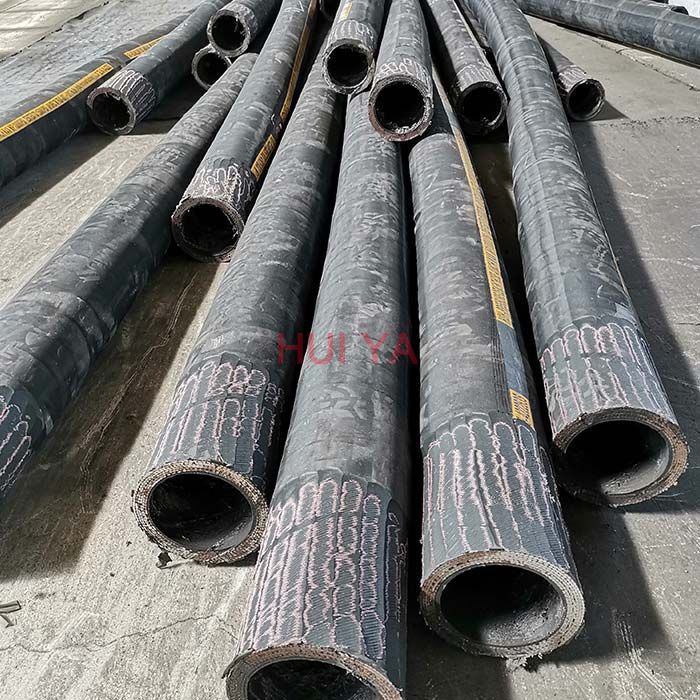
FLANGE-UP– Oil-field slang meaning to finish the job. Derived from work with pipe having flanges (rims) on the ends; this pipe is bolted together at those flanges; the pipe can carry liquids once it is “Flanged Up.”
JACK–KNIFE RIG– A mast-type derrick whose supporting legs are hinged at the base. When the rig is to be moved, it is lowered or laid down intact and transported by truck.
KELLY– The first and sturdiest joint of the drill column; a thick-walled, hollow steel forging with two flat sides and two rounded sides. When fitted into the square hole in the rotary table will rotate the kelly joint and thence the drill column and drill bit. Attached to the top of the kelly is the swivel andmud hose.
KELLY HOSE or MUD HOSE –This is a flexible, steel-reinforced, rubber hose connecting the mud pump with the swivel and kelly joint on the drilling rig. Mud is pumped through the mud hose to the swivel and down through the kelly joint and drill pipe to the drill bit at the bottom of the hole.
RAT HOLE –A slanted hole drilled near the well’s bore hole to hold theKellyjoint when not in use. The kelly is unscrewed from the drill string and lowered into the rat hole as a pistol into a scabbard.




 8613371530291
8613371530291